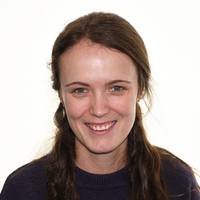Martin Group
Medical and population genomics
Our current projects use data from the following studies:
- Three British birth cohorts: the Avon Longitudinal Study of Parents and Children (ALSPAC), the Millenium Cohort Study, and Born in Bradford. All three cohorts have rich phenotypic data on a multitude of traits, linkage to educational and health records, as well as existing genotype-chip data. We are generating exome-sequence data on ~25k probands plus a subset of their parents, in order to study the impact of rare and common variants on cognitive development and behavioural traits relevant to neurodevelopmental disorders.
- Deciphering Developmental Disorders (DDD) is a study of >13,000 patients with rare, severe paediatric disorders who have been exome-sequenced and genotyped to find diagnoses, discover new genes and understand the genetic architecture of these conditions.
- Genomics England – 100K Genomes Project (GEL) is a clinical whole-genome sequencing project embedded within the National Health Service, from which the data have been made available for research. We are particularly focusing on the ~20,000 families with rare paediatric disease, of whom ~10% are South Asian.
- Genes & Health (formally known as East London Genes & Health) is a population-based cohort of British South Asians with high rates of cardiometabolic disease and of parental relatedness (current N~50,000, and growing to 100,000). Electronic health record and genotype data are available on all individuals, and exome-sequence data on ~5,500. We are currently exome-sequencing the full 50,000 individuals, in an exciting collaboration with pharma partners.
A key feature of our research is to work in partnership with the individuals and populations we are studying. We uphold strict data security and confidentiality procedures and work closely with cohorts we are studying in community engagement and dissemination of our scientific findings.
Genetic architecture of rare neurodevelopmental disorders
Rare and de novo large-effect exonic variants are known to play a major role in rare neurodevelopmental disorders (NDDs) such as intellectual disability and epilepsy. However, it is becoming increasingly clear that polygenic background plays a role. We are trying to characterise that role, to understand the interplay between common and rare variants, whether polygenic background has a direct and/or indirect effect, and, if there is an indirect effect, how it is mediated (see this recent paper).
Genetics of cognitive and behavioural traits
Results from published (this paper and this one) and ongoing work in the DDD study suggest an important role for incompletely penetrant rare variants in NDDs, and that common variants affecting NDD risk also impact cognitive ability in the general population. In a recent collaboration led by the Hurles group, we demonstrated that damaging rare variants in highly constrained gene reduce the number of offspring individuals have, and that this is likely to be via their effects on cognitive and behavioural traits which affect individuals’ likelihood of finding a partner. Following this work, in collaboration with the Hurles group, we are exploring the effect of rare and common variants on cognitive and behavioural traits at different life stages using large birth cohorts (see this recent preprint).
Patterns and rates of de novo mutations and their causes
De novo mutations make a major contribution to neurodevelopmental disorders. Parental age is the major factor contributing to de novo mutation rate but we are exploring whether various genetics and environmental factors also contribute. This is collaborative work with the groups of John Perry, Raheleh Rahbari and Aylwyn Scally. Recent papers are here and here.
The genetic basis of complex disease in South Asian populations
Most studies of the genetics of complex disease have taken place in European ancestry populations, and it is well established that the results do not necessarily translate well into other populations. British South Asians have particularly high rates of type 2 diabetes and ischaemic heart disease, but our understanding of the genetic contribution to these conditions in this population is lagging behind that for European-ancestry individuals. We are analysing genotype and sequence data, together with electronic health record data from Genes & Health, to discover new associations, to explore the extent to which trait-associated variation has undergone founder effects (given our findings about fine-scale population structure in this population), and to understand the basis of associations between autozygosity and complex traits (described in this recent paper from the group). One of our key recent preprints on analysis of 44k exomes from the Genes & Health cohort can be found here.
Human knockouts
Parental relatedness (consanguinity) is common in some South Asian communities, and increases the probability of an individual inheriting two copies of the same rare variant. Hence, consanguineous individuals are highly enriched for rare homozygous loss-of-function variants (knockouts), which can be informative about gene function and new drug targets. We are investigating the effects of knockouts in the Genes & Health project through association analysis with various phenotypes (see here) including transcriptional profiles observed in single-cell RNAseq data, and through recall-by-genotype studies such as the one described in this paper.
Publications and preprints since 2020
Martin lab members in bold text; * and ` indicate joint first and joint last authorships respectively
Key publications
Huang QQ*, Wigdor E*, …., Hurles ME, Martin HC. Examining the role of common variants in rare neurodevelopmental conditions, Nature (2024).
Chundru K, …, Ustach VD`, Martin HC`. Federated analysis of the contribution of recessive coding variants to 29,745 developmental disorder patients from diverse populations, Nature Genetics (2024).
Malawsky D*, van Walree E*, …., O’Connell J, Martin HC. Influence of autozygosity on common disease risk across the phenotypic spectrum, Cell (2023).
Other publications
Heng TH, …, Martin HC. Widespread recessive effects on common diseases in a cohort of 44,000 British Pakistanis and Bangladeshis with high autozygosity, American Journal of Human Genetics (2025).
Garcia-Salinas OI*, Huang S*, …, Rahbari R`, Scally A`, Martin HC`. The impact of ancestral, environmental and genetic influences on germline de novo mutation rates and spectra, accepted in principle, Nature Communications (2025).
Abdellaoui A, Martin HC, Kolk M, Rutherford A, Muthukrishna M, Tropf FC, Mills MC, Zietsch BP, Verweij KJH, and Visscher PM. Socio-economic status is a social construct with heritable components and genetic consequences. Nature Human Behaviour (2025).
Koko M, Satterstrom K, …, Warrier V`, Martin HC`. Contribution of autosomal rare and de novo variants to sex differences in autism, American Journal of Human Genetics (2025).
Liu T*, ,, …, , ,
Stankovic S*, Shekari *, Huang QQ*, Gardner EJ*, Ivarsdottir EV*…, Martin HC`, Stefansson K`, Perry JRB`, Murray A`. Genetic susceptibility to earlier ovarian ageing increases de novo mutation rate in offspring, Nature (2024).
Davies NM, Hemani G , Neiderhiser J, Martin HC, Mills M, Visscher PM, Yengo L, Strudwick Young A, Keller M. The importance of family-based sampling for biobanks, Nature, 2024.
Koko MM*, Fabian L*,…, Bann D, Timpson N, Wright J, Hurles ME, Martin HC. Exome Sequencing of UK Birth Cohorts (data note). Wellcome Open Research (2024)
Lord J, …, Baralle D`, Martin HC`, Whiffin N`. Non-coding variants are a rare cause of recessive developmental disorders in trans with coding variants, Genetics in Medicine (2024).
Wigdor E, …., Martin HC. Investigating the role of common cis-regulatory variants in modifying penetrance of putatively damaging, inherited variants in severe neurodevelopmental disorders, Scientific Reports (2024).
Warrier V, Stauffer E, Huang QQ, Wigdor E, (13 other authors), Won H*, Martin HC*, Bullmore ET*, Bethlehem RAI. The genetics of cortical organisation and development: a study of 2,347 neuroimaging phenotypes, Nature Genetics (2023).
Gardner EJ, (6 other authors), Martin HC, Hurles ME. Reduced reproductive success is associated with selective constraint on human genes, Nature (2022).
Huang QQ*, Salah N*, …., Lumbers T`, Martin HC`, Kuchenbaecker K`. Transferability of genetic loci and polygenic scores for cardiometabolic traits in British Pakistanis and Bangladeshis, Nature Communications (2022).
Hodgson S*, Huang QQ*, …., Martin HC`, Finer S`. Integrating polygenic risk scores in the prediction of type 2 diabetes risk and subtypes in British Pakistanis and Bangladeshis: A population-based cohort study, PLoS Medicine (2022).
Warrier V, (14 other authors), Martin HC, Bourgeron T, Baron-Cohen S. Genetic correlates of phenotypic heterogeneity in autism, Nature Genetics (2022).
Arciero E, Dogra SA*, Malawsky D*, Mezzavilla M*, ….., Iles MM`, Martin HC`. Fine-scale population structure and demographic history of British Pakistanis, Nature Communications (2021).
Martin HC, …., Hurles ME. The contribution of X-linked coding variation to severe developmental disorders, Nature Communications (2021).
Lam BYH*, Williamson A*, Finer S*, (24 other authors), Martin HC, Coll AP, Rowitch DH, Wareham NJ, van Heel DA, Timpson N, Simerly RB, Ong KK, Cone RD, Langenberg C, Perry JRB, Yeo GS, O’Rahilly S. MC3R links nutritional state to childhood growth and the timing of puberty, Nature (2021).
Uffelmann E, Huang QQ, Munung NS, DeVries J, Okada Y, Martin A, Martin HC, Lappalainen T, Posthuma D. Genome-wide association studies, Nature Reviews Primers (2021).
Almarri MA, (4 other authors), Martin HC, Xue Y, Tyler-Smith C. The Genomic History of the Middle East, Cell (2021).
Gardner EJ, (7 other authors), Martin HC, (3 other authors), Hurles ME. Detecting cryptic clinically relevant structural variation in exome-sequencing data increases diagnostic yield for developmental disorders, AJHG (2021).
Kaplanis J*, Samocha KE*, Wiel L*, Zhang Z*, (4 other authors), Martin HC, (21 other authors), Hurles ME`, Gilissen C`, Retterer K`. Evidence for 28 genetic disorders discovered by combining healthcare and research data, Nature (2020).
Minikel EV, Karczewski KJ, Martin HC, (11 other authors), Daniel G. MacArthur. Evaluating drug targets through human loss-of-function genetic variation, Nature (2020).
Finer F, Martin HC, (13 other authors), van Heel DA.Cohort Profile: East London Genes & Health (ELGH), a community-based population genomics and health study in British Bangladeshi and British Pakistani people, International Journal of Epidemiology (2020).
Preprints
Malawsky DS, Koko M, Danacek P, Huang W, Wootton O, Huang QQ, Wade EE, Lindsay SJ, Arden R, Hurles ME, Martin HC. The differential effects of common and rare genetic variants on cognitive performance across development, in revision and available on medRxiv (2024).
van den Berg*, Huang W*, Malawsky DS*, …., Hurles ME`, Abdellaoui A`, Martin HC`. Imputation of fluid intelligence scores reduces ascertainment bias and increases power for analyses of common and rare variants, submitted and available on medRxiv (2025).
Zhang X, (23 other authors), Martin HC, Warrier V. An axis of genetic heterogeneity in autism is indexed by age at diagnosis and is associated with varying developmental and mental health profiles, accepted in principle available on medRxiv (2024).
Wootton O*, Campbell P, Richardson S, Lindsay SJ, (6 other authors), Radford EJ`, Martin HC`. Investigating the Interplay Between Prematurity and Genetic Variation in the Context of Rare Developmental Disorders, submitted and available on medRxiv (2025).
Kim HI*, DeBoever C*, Walter K*, Kalantzis G*, Li C*, Mozaffari SV*, Kundu K*, Jacobs BM*, …, Martin HC `, van Heel D`. Exome sequencing and analysis of 44,028 British South Asians enriched for high autozygosity, under review and available on medRxiv (2025).
Our people
Group lead
Core team

Isaac Garcia-Salinas
PhD Student

Dr Teng Hiang Heng
PhD Student

Dr Qinqin Huang
Senior Staff Scientist

Georgios Kalantzis
Postdoctoral Fellow

Mahmoud Koko Musa
Postdoctoral Fellow

Klaudia Walter
Senior Staff Scientist

Dr Olivia Wootton
Postdoctoral Fellow
Previous core team members

Mohamed Almarri
PhD Student

Elena Arciero
Postdoctoral Fellow

Dr Patrick Campbell
Visiting Scientist

Daniel Malawsky
PhD Student

Mari Niemi
Research Associate
Related groups
Partners
The Martin Group collaborates with the following groups at the Sanger Institute:
External
East London Genes and Health (ELGH) project
East London Genes & Health is one of the world’s largest community-based genetics studies, aiming to improve health among people of Pakistani and Bangladeshi heritage in East London by analysing the genes and health of 100,000 local people.
